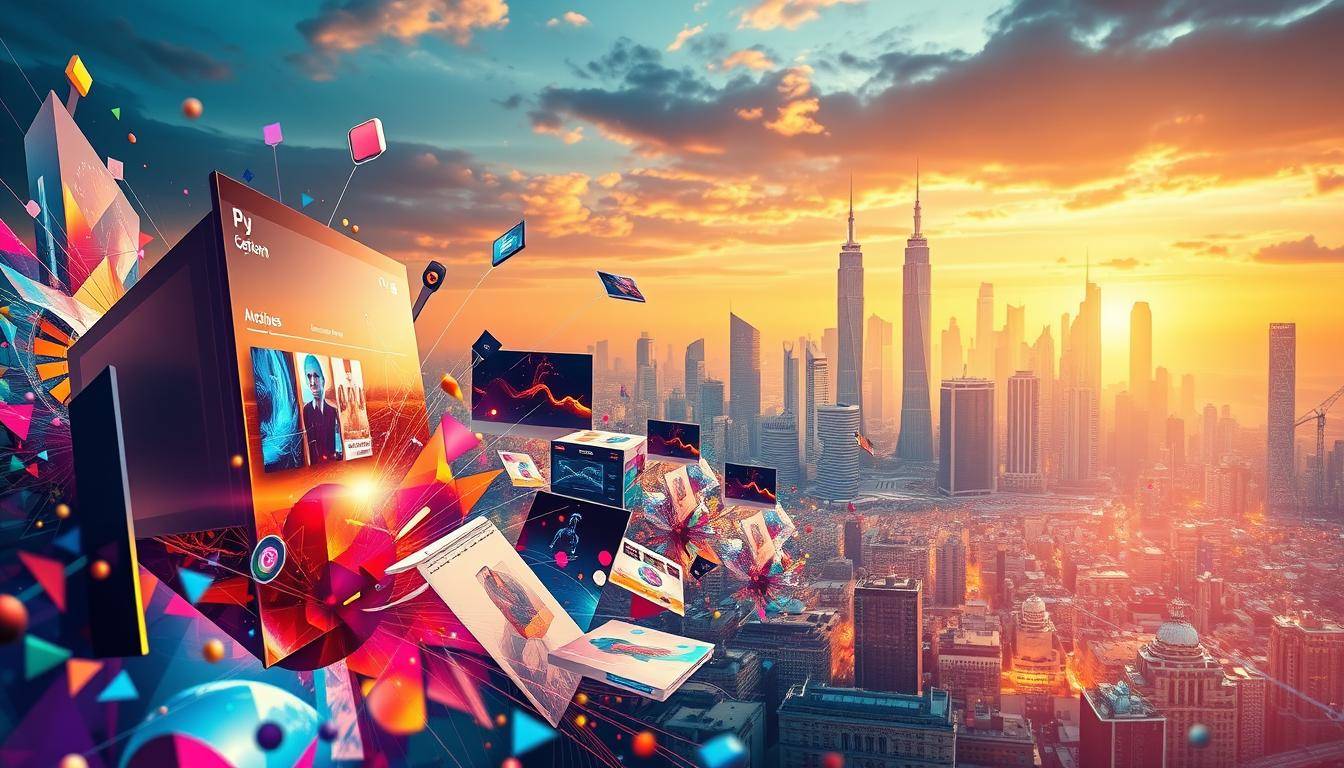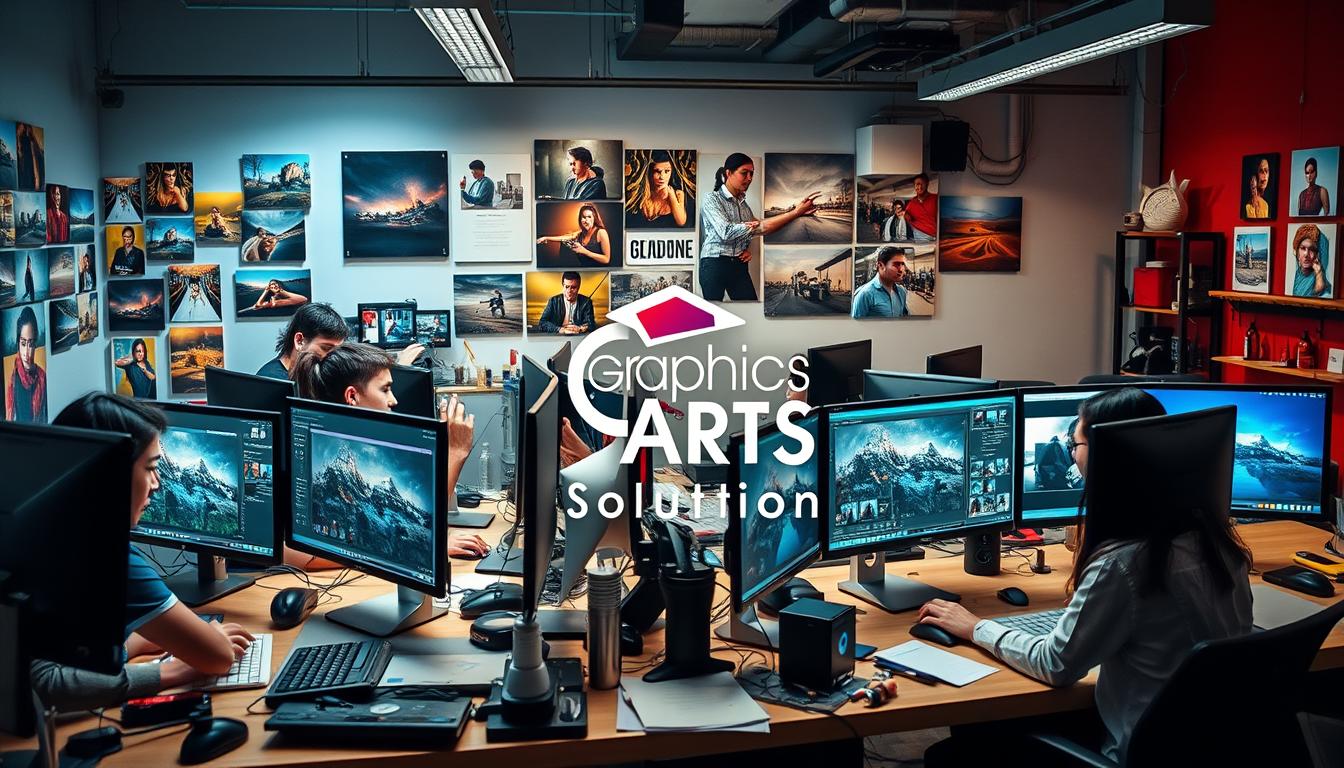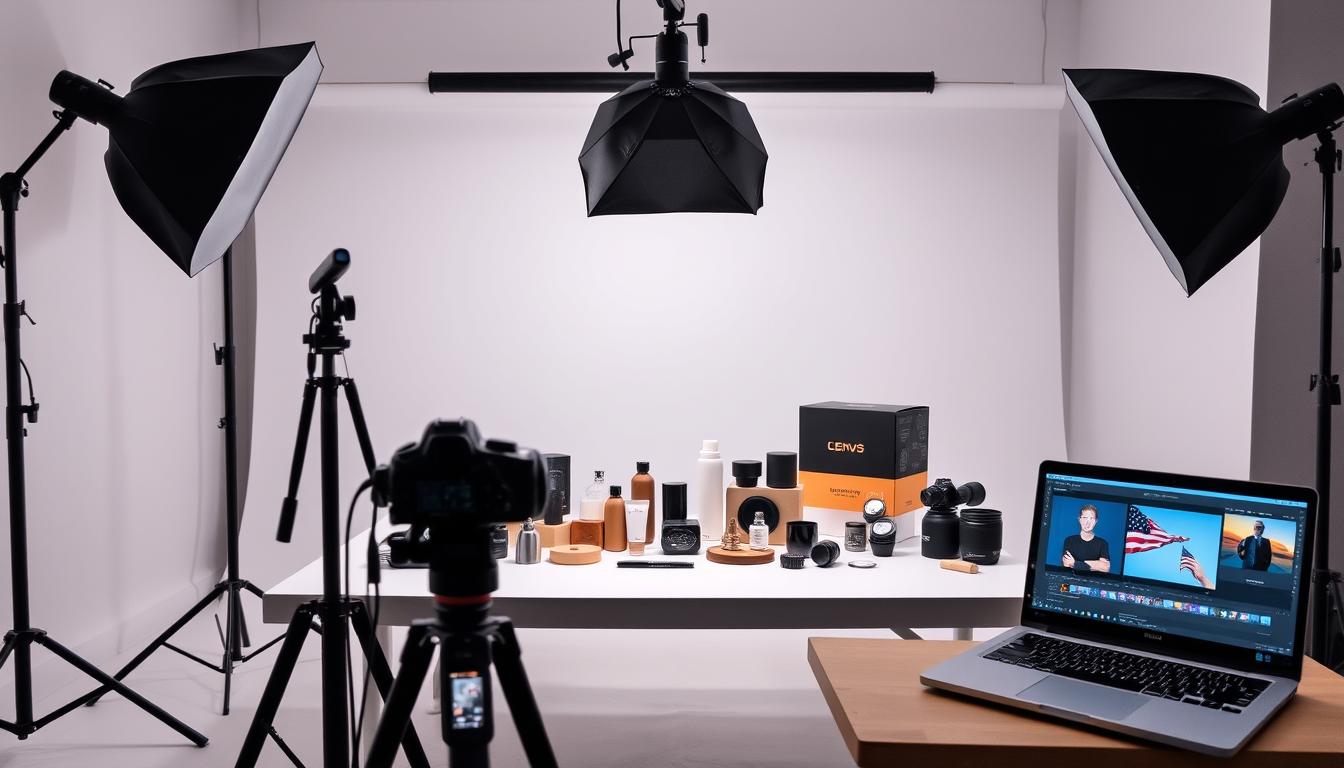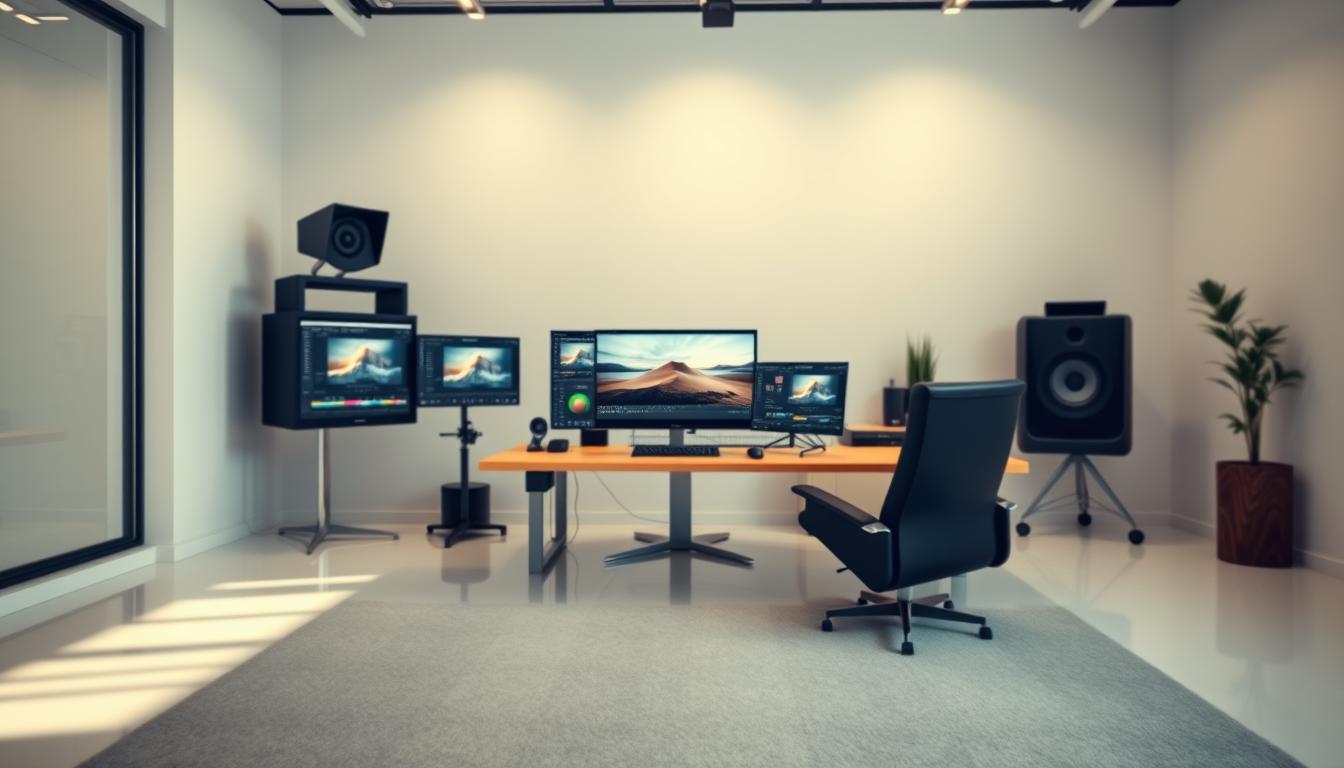I’m excited to share the top trends for 2026 in visual content creation. The world is changing fast. This is thanks to new AI-powered editing software and cool technologies.
These trends will change how we tell stories with pictures. They will also make our photos look amazing. Knowing these trends will help you make your content better. It will keep you up-to-date in the digital world.
The State of Photo Editing in 2026
In 2026, photo editing is more exciting than ever. The industry has changed a lot because of new tech and what people want. Let’s look back at how we got here.
How We Got Here: A Brief Evolution
Photo editing has changed a lot. It started with manual darkroom work and now uses AI. Digital editing software came in the late 20th century. It changed how photographers work.
Adobe Photoshop in the 1990s was a big step. It set the standard for editing photos. Then, new tools and tech came, each adding something new.
Now, we have mobile editing apps for editing anywhere. AI and machine learning make editing easier.
| Year | Milestone | Impact |
|---|---|---|
| 1990 | Adobe Photoshop launched | Set the standard for professional photo editing |
| 2000s | Rise of digital cameras | Increased demand for photo editing software |
| 2010s | Mobile editing apps emerged | Enabled editing on-the-go |
Why These Trends Matter for Creators
Creators need to know these trends to succeed. The democratization of professional editing tools has made it easier for everyone. This means more competition, so creators must keep up.
AI-powered editing tools have changed how we work. AI does some tasks, freeing creators to focus on creative decisions. This opens up new ways to express creativity.
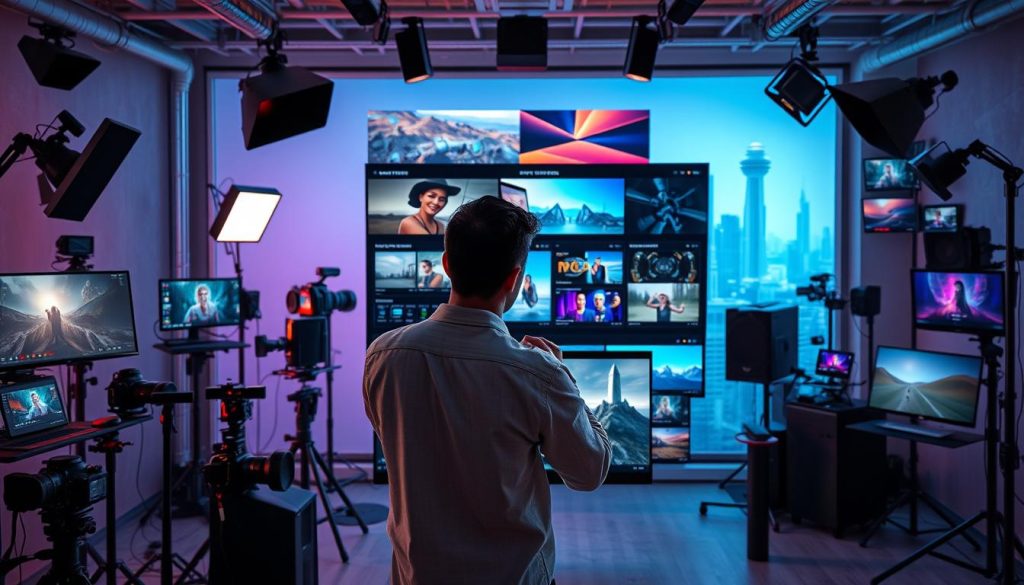
Knowing about photo editing’s history and current trends helps creators. They can make content that really connects with people.
Major Photo Editing Trends Transforming Visual Content
In 2026, photo editing is changing a lot. We’re moving from focusing on technical skills to being more creative. Also, editing tools are becoming easier for everyone to use.
Shift from Technical to Creative Focus
Photo editing is now more about being creative. With better tools, editors can focus on the artistic side. This change is making visual content more interesting.
Aspects of this shift include:
- More emphasis on storytelling and narrative
- Increased use of creative filters and effects
- Greater flexibility in editing software
This change is not just about looks. It’s also about making content creation faster. For example, AI tools can do hard tasks, giving creators more time for creativity.

Democratization of Professional Editing Tools
Now, more people can use top-notch editing tools. This makes it fair for everyone to make professional-looking content.
| Feature | Professional Software | Consumer-Grade Software |
|---|---|---|
| Advanced Editing Tools | Available | Available |
| AI-Powered Features | Available | Limited |
| User Interface | Complex | User-Friendly |
The table shows how different software is. As tools for everyone get better, the gap between pro and amateur is shrinking.
In 2026, visual content is all about being creative and easy to use. As these trends grow, we’ll see even more amazing content.
AI-Powered Editing: Beyond Basic Automation
AI is changing photo editing. It lets creators do complex edits easily. This change is not just simple tasks. It’s about using advanced tech for top-notch edits.
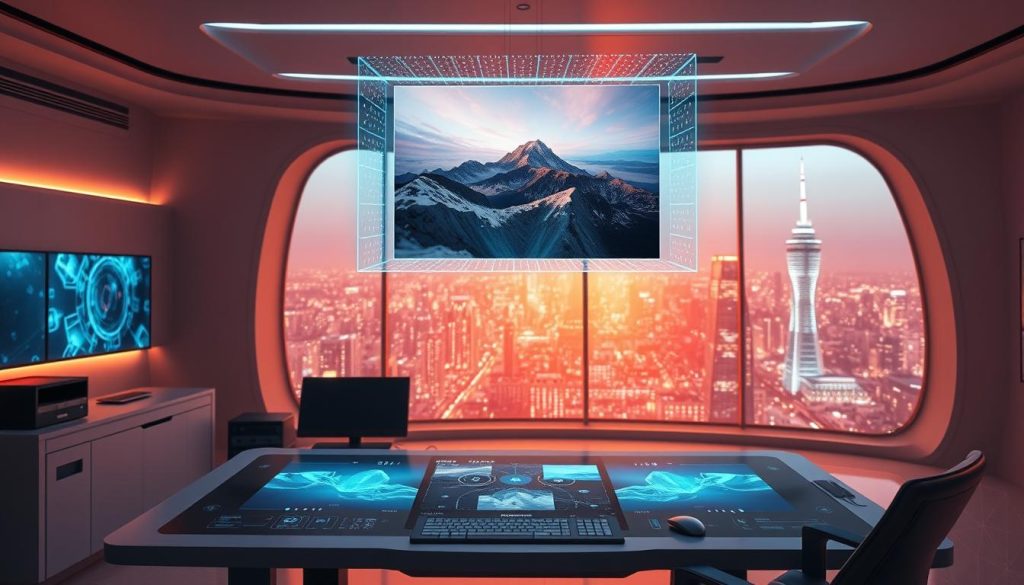
Generative AI for Complex Edits
Generative AI leads this change. It makes edits that used to take a lot of time or were hard to do. It’s great for changing backgrounds and adding or removing objects.
One-Click Background Replacement
This feature lets you change an image’s background with one click. It saves a lot of time. The AI finds the subject and changes the background smoothly, making it look natural.
Content-Aware Object Generation
This feature lets you add or remove objects from an image. It keeps the scene looking right. This is super useful for business photos and special effects.
Personalized AI Editing Assistants
AI editing assistants are getting smarter. They give suggestions based on how you like to edit. They make editing faster and more fun.
Ethical Considerations in AI Editing
As AI helps with photo editing, we must think about ethics. Problems like deepfakes, copyright issues, and AI lies are big concerns. Creators and developers must work together to use AI right.
Using AI for editing while thinking about ethics opens up new creative ways. It lets us explore what’s possible in photo editing.
Immersive Editing: AR and VR Integration
AR and VR are changing photo editing. They’re making it more fun and interactive. These technologies are growing fast, making editing better than ever.
Now, creators can dive into their work in new ways. AR and VR let them play with images in 3D. This makes pictures more alive and fun to explore.
Editing in Virtual Spaces
VR is changing how we edit pictures. It lets editors work in virtual places. They can step into their images to make changes.
VR editing has many benefits:
- It makes editing feel more real
- Controls are easier to use
- It’s a full, immersive experience
AR-Enhanced Photo Manipulation
AR adds cool features to photo editing. It lets editors add digital stuff to real pictures. They can see their changes live on their camera.
AR is great for:
- Seeing edits in real life
- Making interactive tutorials
- Working better with clients
Spatial Photography Editing
Spatial editing works with 3D pictures. It’s perfect for VR and AR. It makes pictures feel more real.
Depth-Aware Editing Tools
These tools help editors adjust pictures based on distance. They’re key for making AR and VR look real.
3D Scene Reconstruction
This tech turns 2D pictures into 3D scenes. It’s essential for immersive editing. It lets editors work with accurate 3D models.
Let’s compare old editing to new immersive editing:
| Feature | Traditional Editing | Immersive Editing |
|---|---|---|
| Dimensionality | 2D | 3D |
| Interactivity | Limited | High |
| Spatial Awareness | Low | High |
Immersive editing is getting better. Soon, we’ll have even more amazing tools. Photo editing will take us to new worlds.

Sustainable Photo Editing Practices
The photo editing world is changing. It’s moving towards being more green. This change comes from caring more about our planet and wanting to use eco-friendly ways to work.
It’s very important to edit photos in a way that’s good for the Earth. With more photos needed, editing uses a lot of energy. So, the industry is working on energy-efficient editing software. This software helps lower carbon emissions and keeps quality high.
Energy-Efficient Editing Software
Energy-efficient editing software is a big step forward. It uses less energy but doesn’t slow down. For example, some software:
- Uses smart algorithms to need less computing power
- Stores data in ways that use less space
- Adjusts how fast it works based on your computer
Using this software helps editors be kinder to the planet. It also makes editing faster and better.
Eco-Conscious Presets and Filters
Eco-friendly presets and filters are also important. They’re made to be good for the Earth. Some key features are:
- Presets that need less editing steps, saving energy
- Filters that work well and don’t use too much computer power
- Ways to share them that don’t waste digital space
Carbon-Neutral Editing Workflows
Working towards carbon-neutral editing is a big goal. It’s not just about the tools, but also how editors work. Some ways to get there include:
- Using green energy to power editing stations
- Managing data well to use less storage
- Helping offset carbon emissions through green projects
By using these green editing practices, pros can help the industry be better for the planet. And they can keep making great photos.
Mobile Editing Revolution: Beyond Basic Filters
Mobile editing is changing how we edit photos. It’s now easier and more powerful. Thanks to better technology, editing photos on phones is very advanced.
Professional-Grade Mobile Editing Suites
Mobile editing has improved a lot. Apps like Adobe Lightroom Mobile and Snapseed have advanced tools. They offer RAW image editing, layers support, and advanced noise reduction.
These suites have cool features:
- Advanced selection tools
- Content-aware adjustments
- Local adjustments with precision
Hardware Advancements for Mobile Editing
Mobile devices have gotten better for editing. Two big improvements are Advanced Camera Sensors and Specialized Processing Chips.
Advanced Camera Sensors
Today’s phones have great camera sensors. They take pictures with more detail and range. This means better images for editing.
Specialized Processing Chips
Chips like Apple’s Neural Engine or Qualcomm’s Snapdragon processors help editing apps work faster. They make editing in real-time possible.
| Feature | Benefit | Impact on Mobile Editing |
|---|---|---|
| Advanced Camera Sensors | Better image quality | More detailed images for editing |
| Specialized Processing Chips | Faster processing | Real-time editing capabilities |
| Cross-Platform Editing | Seamless workflow | Consistency across devices |
Cross-Platform Editing Experiences
Editing across devices is key now. Many apps work well on both phones and computers. This lets users start editing on one device and finish on another.
This way, editors can work on their projects from anywhere. They can use the device that’s easiest at the time.
Cloud-Based Collaborative Editing Ecosystems
Cloud-based editing is changing how we make visual content. Now, creators can work together from anywhere. This is all thanks to cloud technology.
Real-Time Collaborative Editing
Cloud editing lets us work together live. We can all edit the same project at once. This makes editing faster and easier.
- Live Feedback: We can give feedback right away. This cuts down on delays in team projects.
- Simultaneous Edits: We can all work on different parts of a project at the same time. This makes editing smoother.
Version Control and Edit History
Cloud platforms also keep track of all changes. They let us go back to old versions if needed.
| Feature | Description | Benefit |
|---|---|---|
| Version Control | Tracks changes and keeps a history of edits | Keeps our work safe and lets us go back to old versions easily |
| Edit History | Records every edit made to a project | Helps us see who did what and when, making teamwork better |
Cross-Device Synchronization
With cloud editing, I can start a project on one device and pick it up on another. I never lose my work.
- Flexibility: I can work on projects from anywhere, using any device with internet.
- Consistency: All devices stay up to date with the latest project version. This avoids version problems.
Using cloud-based editing, creators can work better together. We can make great visual content more efficiently.
Computational Photography: The New Frontier
I’m excited to explore how computational photography is changing the game for editors. It’s a big change in how we edit images. Now, we use advanced algorithms and lots of power to get amazing results.
Light Field Photography Editing
Light field photography editing lets us post-capture refocusing and change depth. This gives editors a lot of flexibility. Light field cameras capture light rays’ intensity and direction.
This means we can make images that can be refocused after they’re taken. It’s really useful when we need to change the depth or focus of a subject.
Neural Rendering Techniques
Neural rendering uses deep learning models to make high-quality images from little data. It’s great for making detailed images from just a few pixels.
This tech is making image enhancement and content creation easier. With big datasets and smart neural networks, editors can do things they couldn’t before.
Physics-Based Image Reconstruction
Physics-based image reconstruction uses physics to simulate real-world conditions in editing. It includes things like fixing atmospheric effects and simulating lighting.
Atmospheric Condition Correction
This method lets editors adjust for atmospheric effects like haze or fog. It helps make images look better by fixing environmental problems.
Advanced Lighting Simulation
Advanced lighting simulation makes realistic lighting effects. It considers things like material properties and the environment. This makes images look more real and interesting.
| Technique | Description | Application |
|---|---|---|
| Light Field Photography | Captures light intensity and direction | Post-capture refocusing, depth manipulation |
| Neural Rendering | Uses deep learning for image generation | Image enhancement, content creation |
| Physics-Based Reconstruction | Simulates real-world physics in images | Atmospheric correction, lighting simulation |
Social Media Integration: Platform-Specific Editing
Social media has changed photo editing a lot. Now, creators can make their photos fit each platform better. This has made editing tools for each platform very popular.
It’s very important to make editing tools for each social media site. Each site likes different things and has its own people. So, creators need to make their photos fit each site well.
Platform-Optimized Editing Tools
These tools help creators make photos that fit each site’s needs. They have special features like:
- Changing the photo size for each site
- Using special templates for each site
- Changing the photo size and shape for many sites at once
Engagement-Driven Editing Features
These features help creators make photos that people like. They include:
- Helping with captions and tags
- Using AI to see what photos will get more likes
- Telling creators how well their photos are doing
Using these features can help photos get more likes and shares. This can lead to more people buying things.
Trend-Responsive Editing Algorithms
These algorithms help creators keep up with new trends. They look at what’s popular now and suggest editing styles and effects that people will like.
Benefits of these algorithms include:
- Being ahead of the competition with new trends
- Making photos more interesting and liked by more people
- Not taking too long to keep up with new trends
By using these tools and features, creators can make their photos work best on different social media sites.
Hardware Innovations Shaping Photo Editing Trends
In 2026, hardware innovations lead the photo editing world. New ways to edit photos are coming from advanced tools.
Next-Generation Input Devices
New input devices change how we edit photos. Graphic tablets with better pressure and design make editing precise and comfy.
These tools do more than just improve editing. They open up new ways to be creative. For example, tilting and rotating styluses offer more control.
Specialized Editing Displays
Specialized editing displays also play a big role. Monitors with accurate colors and wide gamut support are key for pros.
- High Dynamic Range (HDR) for better previews
- Wide color gamut for true colors
- Calibration for steady colors
Quantum Computing Applications
Quantum computing is a new trend in photo editing. It makes complex tasks like noise reduction and image rendering faster.
| Application | Benefit |
|---|---|
| Noise Reduction | Fast processing of complex tasks |
| Image Rendering | Speedier and better quality |
Quantum computing in photo editing is just starting. But its future looks bright, with big changes expected soon.
Conclusion: Embracing the Future of Photo Editing
Looking ahead, photo editing will change a lot. New trends like AI and immersive tech will shape it. Creators need to keep up to stay in the game.
The future looks bright for photo editing. We’ll see better tools that are easy to use. Cloud and mobile editing will open doors for everyone to make great photos.
To be ahead, we must try new things. The photo editing world is growing fast. It’s exciting to see what’s next.
FAQ
What are the top photo editing trends for 2026?
The top trends include AI-powered editing and immersive tech like AR and VR. Also, sustainable editing, mobile editing, and cloud-based editing are key. Computational photography and social media integration are also important.
How is AI changing the photo editing industry?
AI is changing photo editing by making complex edits easy. It automates tasks and offers personalized editing. But, it also raises ethical questions that creators need to think about.
What is immersive editing, and how is it changing visual content?
Immersive editing uses AR and VR to edit photos in virtual spaces. It’s changing how we interact with images and tell stories.
Why is sustainable photo editing important?
Sustainable editing is key to reducing the industry’s carbon footprint. Creators can use eco-friendly software and presets. They can also choose carbon-neutral workflows.
How is mobile editing evolving?
Mobile editing is getting better, with advanced tools and hardware. This lets creators edit on the go easily.
What are the benefits of cloud-based collaborative editing ecosystems?
Cloud-based editing makes teamwork easier. It offers real-time collaboration, version control, and syncing across devices. This helps creators work together better.
What is computational photography, and how is it changing the industry?
Computational photography uses new techniques for amazing realism and detail. It’s changing what’s possible in photo editing.
How is social media integration impacting photo editing?
Social media is driving the need for editing tools for each platform. Creators can now make content that gets more engagement. They use editing features that match trends.
What role are hardware innovations playing in shaping photo editing trends?
New hardware is improving creators’ workflow and productivity. It includes next-gen input devices and editing displays. Quantum computing is also playing a role in shaping the future.

